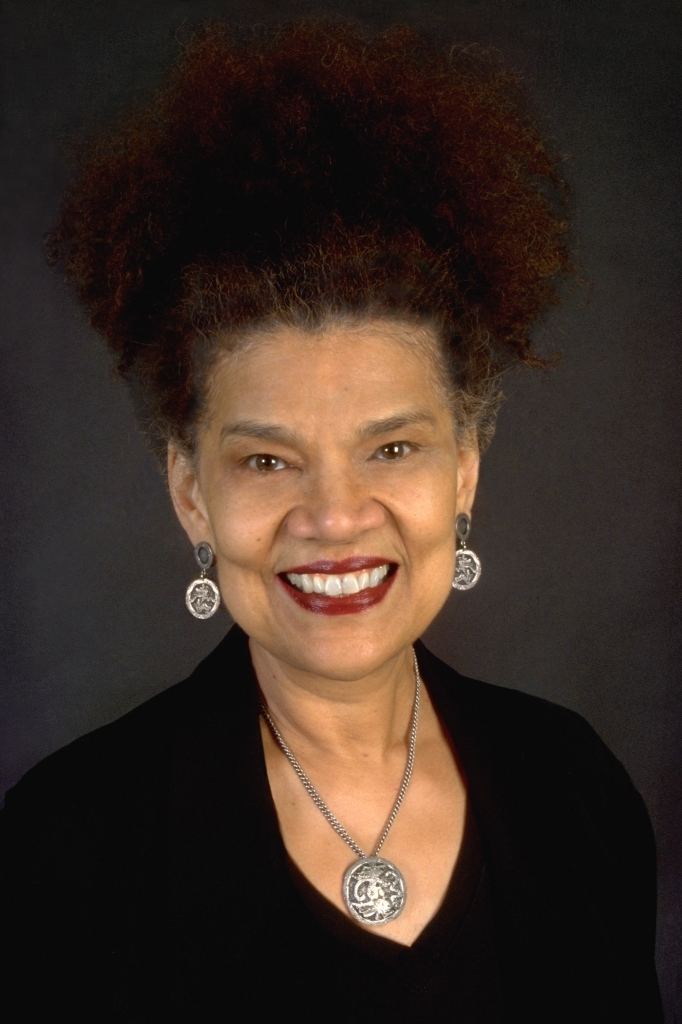 | ||
Awards College Art Association's Distinguished Feminist Award in 2014 | ||
Lorraine o grady on baudelaire and michael jackson
Lorraine O'Grady (born 1934 in Boston) is a New York-based artist and critic, who works in conceptual art and performance art that integrates photo and video installation. Her work explores the cultural construction of identity - particularly that of black female subjectivity - as shaped by the experience of diaspora and hybridity. Regarding the purpose of art, O'Grady has observed: "I think art’s first goal is to remind us that we are human, whatever that is. I suppose the politics in my art could be to remind us that we are all human."
Contents
- Lorraine o grady on baudelaire and michael jackson
- Lorraine o grady la hora de la artista multidisciplinar
- Life and work
- Olympias Maid Reclaiming Black Female Subjectivity Essay
- Awards
- Collections
- References

Lorraine o grady la hora de la artista multidisciplinar
Life and work
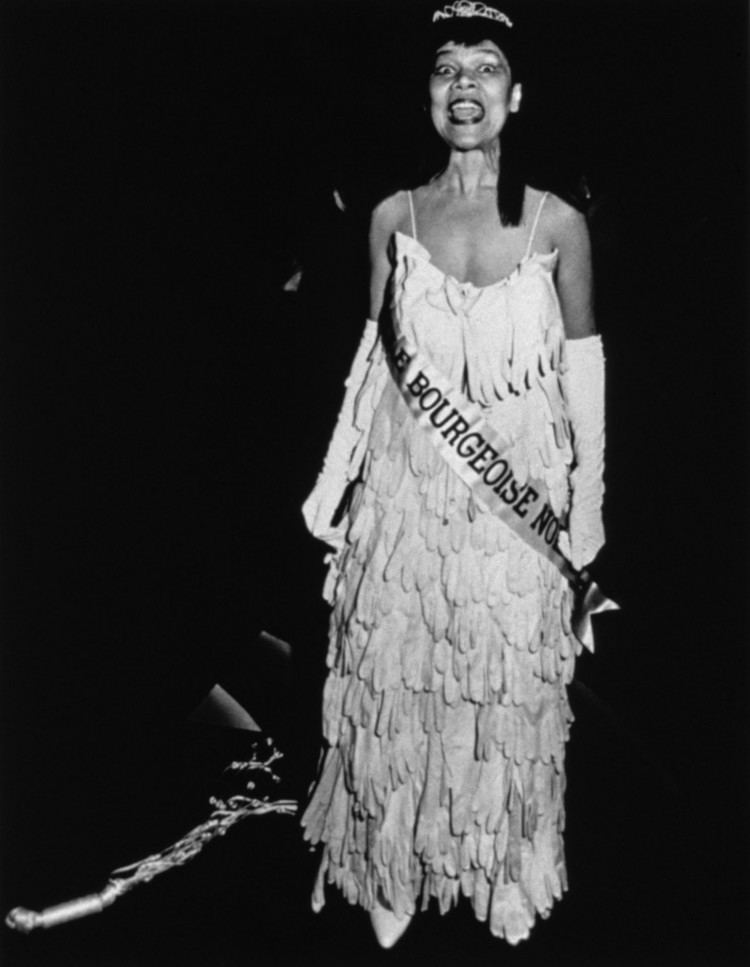
O'Grady was born in Boston to Jamaican parents, who helped establish St. Cyprian's, the first West Indian Episcopal church in Boston. Drawn to the form and aesthetics of the "high church" of nearby St. John's of Roxbury Crossing, O'Grady recalls: "I was permanently formed by the aesthetics of that experience, of the rituals, which are a more stately and elegant version of Roman Catholicism. I did believe until my mid-twenties, until my sister [Devonia] died, then I stopped believing." As a young adult, O'Grady studied economics and Spanish literature at Wellesley College before becoming an artist in 1980.
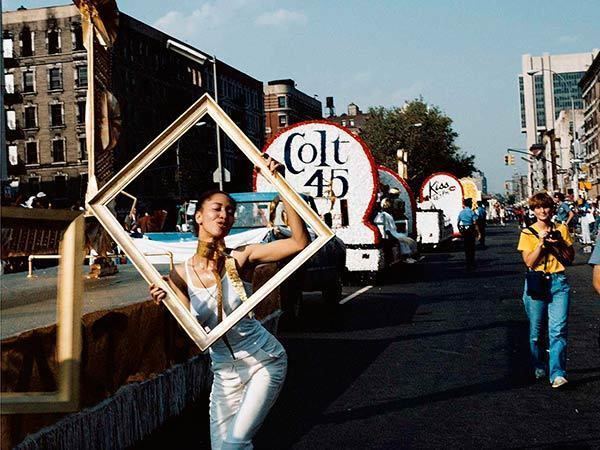
In the 1980s, she created the persona of Mlle Bourgeoise Noire, who invaded art openings wearing a gown and a cape made of 180 pairs of white gloves, first giving away flowers, then beating herself with a white cat-o-nine-tails and shouting out poems that railed against a still-segregated art world which she perceived as not looking beyond a small circle of friends. In 1983, she choreographed a participatory performance called Art Is..., which consisted of a parade float she entered in the annual African-American Day Parade in Harlem. The float was shepherded up Adam Clayton Powell Boulevard by "O’Grady [in character as Mlle Bourgeoise Noire] and a troupe of 15 African-American and Latino performers, dressed all in white, [who] walked around the float carrying empty gold picture frames." The performance not only encouraged onlookers - primarily people of color - to consider themselves art, but also drew attention to racism in the artworld. Beginning in 1991 she added photo installations to her conceptually based work. And in 2007, she made her first video installation during a residency at Artpace in San Antonio, Texas.

Her strongly feminist work has been widely exhibited, particularly in New York City and Europe. O'Grady's early Mlle Bourgeoise Noire performance was given new recognition when it was made an entry-point to the landmark exhibit WACK! Art and the Feminist Revolution, the first mainstream museum show of this groundbreaking art movement. Her practice, seemingly located at and defining the cusp between modernism and a "not-quite-post-modernist" present, has been the subject of steadily increasing interest since it received a two-article cover feature in the May 2009 issue of Artforum magazine. In December 2009, it was given a one-person exhibit in the U.S.'s most important contemporary art fair, Art Basel Miami Beach. Subsequently, O'Grady was one of 55 artists selected for inclusion in the 2010 Whitney Biennial. Her work has since featured in many seminal exhibitions, including: "This Will Have Been: Art, Love & Politics in the 1980s; Radical Presence: Black Performance in Contemporary Art., and "En Mas': Carnival and Performance Art of the Caribbean."
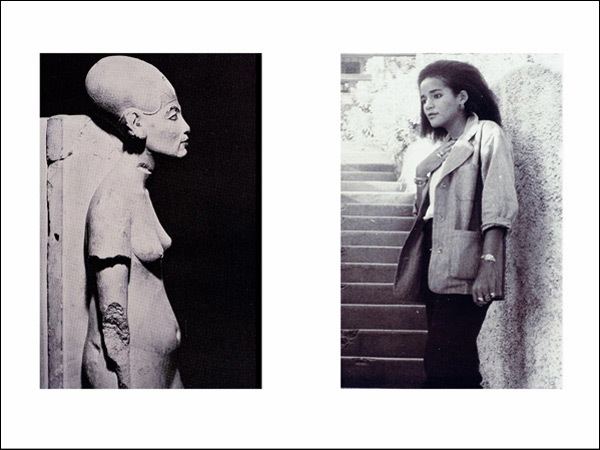
O'Grady first exhibited at the age of 45, after successful careers among others as a government intelligence analyst, literary and commercial translator, and rock critic. This background contributed to an unusually broad perspective in her work as both an artist and writer. In addition to the articles she has written for such publications as Artforum magazine and Art Lies, her canonical essay, "Olympia's Maid: Reclaiming Black Female Subjectivity," has now been anthologized numerous times, most recently in Amelia Jones, (ed.), The Feminism and Visual Culture Reader (2nd Edition, Routledge, 2010).
O'Grady lives and works in the Meatpacking District of New York City.
Olympia's Maid: Reclaiming Black Female Subjectivity (Essay)
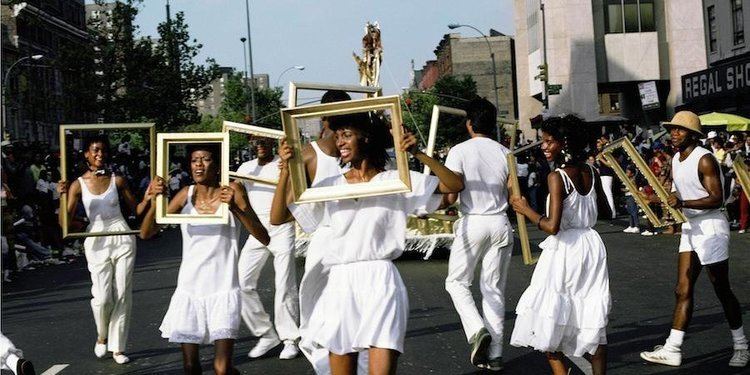
"Olympia's Maid: Reclaiming Black Female Subjectivity" is an essay originally published in 1992 in the book, New Feminist Criticism: Art, Identity, Action. The first part of the essay was published in Afterimage 20 (Summer 1992). Widely referenced in scholarly works, it is a cultural critique of the representation of Black female bodies, and the reclamation of the body as a site of black female subjectivity.
O’Grady opens the essay stating that the female body in the West is not a unitary sign. She uses the metaphor of the coin- that which has two sides but cannot be separated- to distinguish the separate bodies of the West’s metaphorical construction of the woman: white and non-white. This separation designates woman as white and omits the non-white figure from the discourse dealing with sexual difference. This construction of the West’s ‘woman’ places whiteness as fundamental and Blackness as the other, the entity that is parallel in the defining of the self. O’Grady uses the Victorian painting Olympia by Édouard Manet as an example of the Eurocentric depiction of Black womanhood. The painting features a nude prostitute, modeled by Victorine Meurent with her black maidservant, modeled by Laure, in the background. “The image of the black female constructed in this period reflected everything the white female was not.” The West has constructed the not-white woman as unseen.
To further this point, O’Grady cites Sylvia Ardyn Boone’s description of the bare-breasted culture of the Mende people and compares this to an anecdotal account of Black and white women in public pool showers- the Black women remaining covered while white women shower nude, suggesting these women remain covered in order to protect themselves and their bodies from the historically rooted racial abuses in America.
O’Grady uses the metaphors of both the prostitute and feminist psychoanalysis’ the female eunuch as a way of describing Olympia’s maid’s positionality as a Black woman. The white body of Olympia is the only object of male gaze, and Laure’s inclusion is subconsciously critiqued thru the reading of the white figure. In a damaging critique of the painting from when it was originally shown, Amedee Cantaloube describes as “a kind of female gorilla, a grotesque rubber figure surrounded by black, a monkey on a bed, completely nude.”
“O'Grady specifically refers to a tradition of iconography of black female sexuality that casts black women as simplistic stereotypes, such as the "Hottentot Venus," "Jezebel," "mammy," "Sapphire," "welfare queen," and more recently "quota queen" and "baby mama.' " Quoting Patricia Hill Collins, Janelle Hobson states that these stereotypes are products of the systems of power, meant to control those without white skin privilege and “distort the way black women see themselves and each other” They also create the process of unmirroring. Where mirroring in terms of psychology refers to the imitating of one by another, unmirroring refers to the process in which a subjected figure imitates the distorted image of themselves, projected by the authority of the status quo.
O’Grady takes up these issues of representation using modern and contemporary artworks as an example. She cites Judy Chicago’s The Dinner Party (1973–78) as an example of white feminist art that does a poor job of representing Black women. In Dinner Party, of the thirty-nine place settings, Sojourner Truth is the only Black woman present. Truth is not represented by one of the thirty-six ceramic depictions of a vagina, but rather a face. Argued by both O’Grady and Hortense Spillers, this decision to omit the vagina at Truth’s place setting is a symbolic castration and a refusal of Black female sexuality.
O’Grady cites the pursuit of Judith Wilson to confront “the paucity of Black nudes in U.S. Black artist production prior to [1960].” In her attempt to uncover nineteenth-century nudes by black artists, Wilson found only three: Edmonia Lewis’s Poor Cupid (1876), her Asleep (1871) and her sculpture Awake (1872). Each nude figure in the sculptures listed above are white and is a child. This, to O’Grady, is proof that Black artists creating work in accordance with the painting conventions of the time between the nineteenth century and the 1960s were not making works dealing with nudity or works about sexuality. As of 1992, when “Olympia’s Maid” was published, there had been no known artworks that depict a Black nude by a Black artist, especially not one concerning sexuality.
O’Grady references African-American artist, Adrian Piper’s art practice, specifically her performance, Food for the Spirit (1971), as an example of the proper representation of the subjective Black nude, though this is problematic because as of September 2012, Piper has “retired from being black.”
Conceptual artist Renée Greene’s work Seen (1990) is also mentioned as representation based on Black female subjectivity, except according to O’Grady, the work falls short “because it is addressed more to the other than to the self” (156)
In order to avoid such aggressions as Chicago’s and to avoid the disparaging number of artists working with sexuality and identity, O’Grady calls for the theoretical discourse surrounding Black women to be produced by Black women, to establish their subjectivity before theorizing their view of the world and to ignore scholarly pursuits that keep marginal figures out of the center. It is noted that rather than making artwork or literary work tailored to explain the positionality of Black females, where explaining and theory is designated as the masculine manner of thinking, progress is made with work that is showing how it feels, the feminist method of thinking/expressing. Critiquing the imperialism that has oppressed Black people does not teach imperialism the subjecthood of Blackness.
O’Grady discusses the struggle in depicting race, identity and proper representation as a Black female artist, drawing examples from her own artwork: the politics of skin color, hair texture and facial features. In privileging a facial feature that looks a particular way over another or in pairing light and dark skin tones, hierarchies of difference are created. These hierarchies of difference exist because of historical ideologies and they have difficulty breaking down because they are supported by the preconceived importance of the whiteness in the West. O’Grady states:
“to win back that position for the African-American female will require balancing in mental solution a subversion of two objects which may appear specifically distinct: on one hand, phallocentric theory; and on the other, the lived realities of Western imperialist history”
It comes from the understanding of the structures put in place by these two theories and an overall restructuring of these theories for progress to be made. Social change cannot happen without the reorientation of the systems that exist to subjugate Black people.
O’Grady picks out psychoanalysis as the “linchpin of Western (male) [sic] cultural theory.” She quotes Jacqueline Rose’s description of psychoanalysis and race: “To say that psychoanalysis does not, or cannot, refer to non-European cultures, is to constitute those cultures in total ‘otherness’ or ‘difference’; to say, or to try to demonstrate, that it can, is to constitute them as the ‘same.’ ”
“The creation of a black feminist aesthetic must challenge dominant culture's discourse of the black body [as] grotesque and articulate a black liberation discourse on the black body [as] beautiful.” European and European-American society has historically viewed Blackness as ugly. It is up to those working within Black feminist theory and critique to reinvent a new positionality. This, O’Grady argues, comes at a time when subjectivity itself has been problematized by ideology. Ideology is a patriarchal practice and theory is what substantiates it; theories of the political and social as well as the ideological/intellectual aided in the creation of the devalued Black figure. Out of ideology came the notion of binary logic: either/or-ism.
As a standard, the Western mode of thinking, as proposed by many feminists, is ‘either:or-ism.’ It describes two modes of thought or plans of action that can be reached, but never can the two be reached together. “The binary logic of the west takes on an added dimension when confronted with the presence of a black woman.” Behind the binary logic of science in the nineteenth century, literature and art situates the representations of Black woman at both the site and sight of violation. Either/or logic fragments that which it is applied to. Riffing off of this logical ideology, O’Grady makes mention of a contrasting Eastern mode of thinking: ‘both/and’ logic. It describes dialogical thinking and living, implying the functioning of both options within a scenario and suggests the abandonment of the either/or hierarchy.
(This article was written employing the politics of capitalization, capitalizing the “b” in “Black” in ways of underlining importance; importance that has been undermined by whiteness and therefore, not been acknowledged historically.)
Awards
In 1995–96, O'Grady held the Bunting Fellowship in Visual Art at Harvard University's Radcliffe Institute for Independent Study. There she became immersed in the internet during its early years. Her own website, lorraineogrady.com, not inaugurated until 2008, is a model of artist archival design.
Since 1997, O'Grady has been a Senior Fellow of the Vera List Center for Art and Politics, New School University. She has received many awards, including, in 2009, the Anonymous Was A Woman award, a United States Artists Rockefeller Fellowship in Visual Art in 2011, the College Art Association's Distinguished Feminist Award in 2014, and a Creative Capital Award in Visual Art in 2015.
Collections
O'Grady has work in the permanent collections of the Museum of Modern Art, NY; The Art Institute of Chicago, IL; Brooklyn Museum, NY; Davis Museum and Cultural Center, Wellesley; MA Fogg Museum at Harvard, Cambridge, MA; Los Angeles County Museum of Art, CA; Rose Art Museum, Brandeis University, Waltham, MA; The Studio Museum in Harlem, New York, NY; the Wadsworth Atheneum, Hartford, CT; Walker Art Center, Minneapolis, MN, and Worcester Art Museum, MA.
